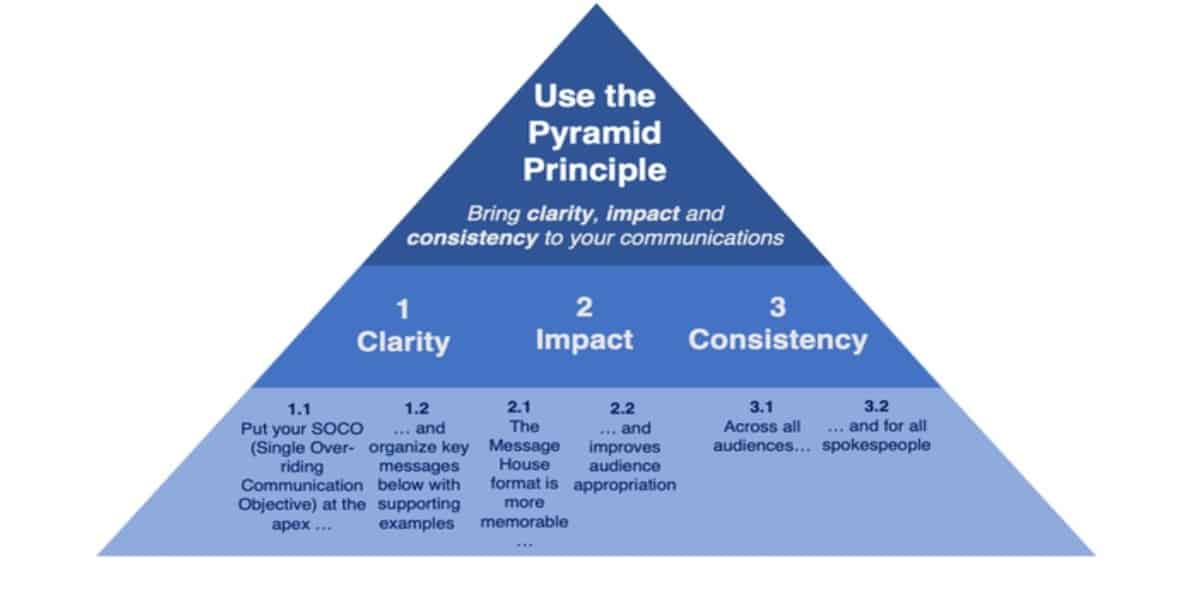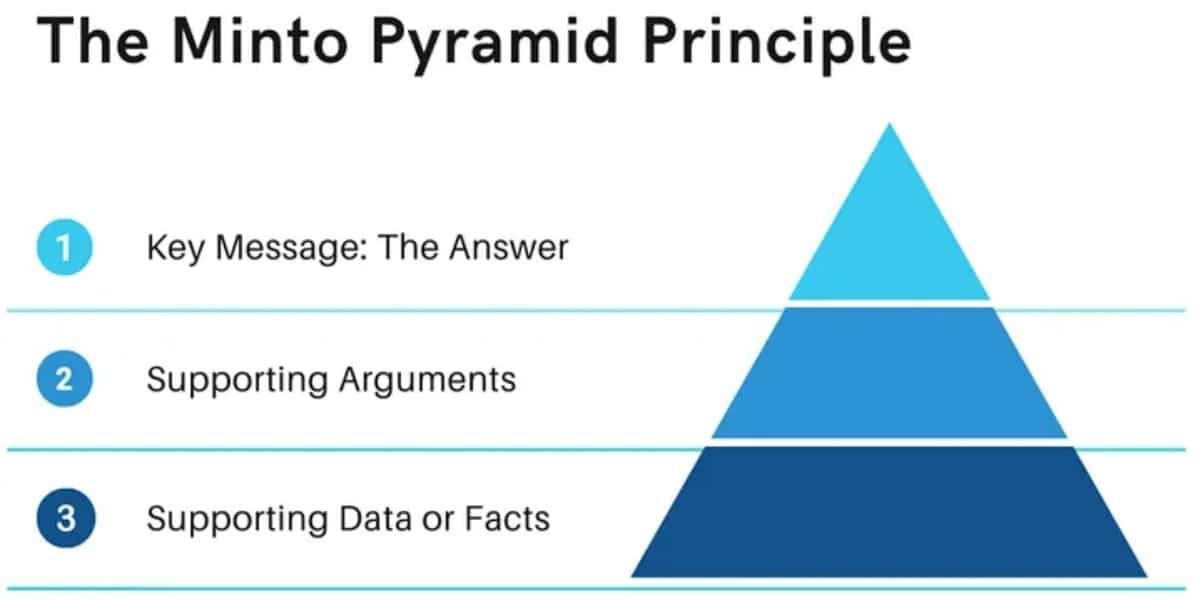Can’t you figure out how to make your content exciting and keep your audience reading? The Pyramid Principle might help. This simple method of writing has been one of the favorite tools of professional writers for many years. It is meant to work on interesting and motivating content.
In this guide, you will learn how to use the Pyramid Principle to make your content grab the audience’s interest and deliver remarkable results.
Using the Pyramid Principle for Blog Posts
Blog posts can greatly benefit from the Pyramid Principle, as people usually read blogs quickly and do not try to dive into details. This principle will make your blog easy and fun to read.
Start with the headline that explains to your audience what they will learn from the post. Then, prepare readers for the upcoming information with the introduction. As to the main content, organize your ideas as clearly as possible. You should support your main ideas with facts, evidence, and examples.
One of the main benefits of the Pyramid Principle for blog posts is that it helps keep you on the right track. A decent headline will show your followers what the content will be about. As you create more content, you continue working on implementing this principle.
Advantages of the Pyramid Principle for Content Writing
The Pyramid Principle can help enhance your writing in several ways:
- Easier for reading and understanding. When your work is well-organized, it is easier for the audience to follow.
- Holds attention. The Pyramid Principle starts with the headline and introduction and continues to build up the case. It makes the content exciting and holds the readers’ attention.
- Shows you know the topic. Using this principle proves your knowledge and expertise.
- Suitable for SEO. The Pyramid Principle makes your work neat and organized. Search engines will perceive your content better.

Credit: forbes.com
3 Examples of the Pyramid Principle
Let us look at some examples to understand how the Pyramid Principle works better.
You may have heard about a blog post on Hubspot, “The Beginner’s Guide to Inbound Marketing.” The title already makes you interested because it suggests that you will learn something important from the blog. The piece starts with a brief intro about what inbound marketing is and why it matters. Then, every element of inbound marketing is discussed separately, one by one, and relies on evidence and subheadings. Firstly, the author tells you how to create good content that people will want to read. Then, you learn how to be found on search engines and, finally, how to handle the leads and keep them interested.
Another example is a report by McKinsey & Company, “The Next Normal: The Recovery Will Be Digital.” It starts with a brief summary to understand what will be discussed next. The intro also provides a background on the report and reveals more information about the context. Then, the report relies on examples and data to discuss specific pieces of advice and trends.
The last example we may look at is Simon Sinek’s TED talk, “How great leaders inspire action.” He uses the Pyramid Principle to organize his presentation. The hook is a catchy counterintuitive phrase: “People don’t buy what you do; they buy why you do it.” Later, the speaker explains how this is true presenting arguments and some more examples.
How to Make the Best Use of the Pyramid Principle
Every guide must include tips on how to best use the approach it is discussing. Here are some for this one:
- Use a catchy headline. It should make people want to read more and inform them of what they will learn specifically.
- Write a good intro. It should set the context for your message and introduce the main point you will make.
- Use clear subheadings. Dividing the text of your content into logical parts with subheadings that help your readers follow your argument.
- Always back up what you are saying. Use a combination of facts, stats, expert opinions, and stories.
- Keep it logical. Make sure each part of your text logically follows the previous one and everything neatly fits together in the end.
- Finish with a call to action. In the conclusion, restate your main point and explain what you want your readers to do next.
- Keep learning. Pay attention to what works and what doesn’t, and adjust your use of the Pyramid Principle accordingly.
With these tips and regular use of this principle, you will be able to create content that engages your readers and delivers results.
Pitfalls to Avoid
While using the Pyramid Principle, there are several common mistakes to avoid. Check the list below:
- Weak Headlines: Your headline should pull readers in and be specific about the benefits of reading the post.
- Overstuffed Introduction: you should use the introduction to build a background for further discussion. Thus, it should be pleasantly brief, not filled with numerous details.
- Scattered Ideas: Using the Pyramid Principle, your ideas should develop in logical succession. Do not jump between two ideas in your writing.
- Absence of Evidence: You should back up your points with numbers, experts’ opinions, examples, etc.
- Weak Ending: you need to finish strong. In this case, your conclusion should summarize your main message and persuade your reader to act.
- Information Overload: If you include too much information, it will be difficult for readers to grasp everything they need from your post. Thus, stay focused and use only information of core importance.
As you can see, it is possible to avoid these pitfalls, and your work will be ideal.
Conclusion
The Pyramid Principle is a simple yet highly effective method for making readers interested in your post and grabbing their attention. You start with a strong headline, continue with a short and straight introduction, and continue building your ideas with supporting evidence. Also, do not put too much information in your post. By following the above advice and the techniques, you will see enhancements in engagement with your readers, your credibility, and SEO. So, trust the Pyramid Principle, step back, and wait for the magic to happen!
Do you need help increasing your traffic with content marketing? Our experts can help. Contact us to learn more. Also, Feel free to reach out through Facebook or LinkedIn too.



Content Marketing vs. SEO: Why You Need Both to Win Online
What is a Blog? – Definition, How to Start a Blog, and Why Your Business Needs One